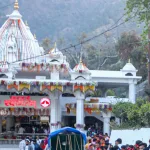In today’s era, foreign trade constitutes an important attibute that paves the way for the progress of any nation. The basis of India’s growing economy is also foreign trade. It is also noteworthy that 95% of India’s foreign trade is conducted through sea route. Although the practice of conducting business across the sea is very ancient, but Indians were the first to introduceto the world successful businesses through sea route around 4500 years ago.
The reason for the rise of India’s ancient Saraswati-Indus civilization was also international trade which was mostly done via sea route. Although the script of that civilization has not been deciphered yet, but archaeological evidence provides evidence of trade through sea route in the ancient civilization of India.
The archaeological site of Lothal, located in Ahmedabad district of present-day Gujarat, was the main centre of international trade through sea. This archaeological site was discovered and excavated by S. R. Rao of the Archaeological Survey of India. From Lothal we have recovered the remains of a huge dockyard which was built using baked bricks. Its size is 216×36 meters. It was connected to the sea through a canal. This dock, built 4500 years ago, is an example of the advanced engineering of our ancestors.
From the excavations conducted inside this dock, we have found five anchor stones. This evidence proves that ships were anchored inside this dock. A 41 feet wide inlet was made in this dock for the ships to enter. From its width, it can be estimated that huge ships were built in the Saraswati-Indus civilization. S.R. Rao is of the opinion that about 60 tons of goods were loaded on a ship and sent to Mesopotamia via the Persian Gulf. Apart from Lothal, maritime trade was also carried out viaKuntasi, Padri, Nageshwar, Bagsara, Nagwara, Desalpur etc.
There is also clear evidence of what type of ships were built by the people living on the banks of Saraswati and Indus rivers around 4500 years ago and what was their shape. A seal has been recovered from the excavation of Mohenjodaro on which we can observe an engraving of a ship. An interesting feature can be observed in this ship which is a provision of a cabin for the sailors to stay on it. Along with this, we can also observe engraving of two birds on it. Scholars are of the opinion that the birds were probably used to work out the directions in the middle of the ocean.
Seal depicting a ship with cabins and birds of Saraswati-Indus Civilization (courtesy – harrapa.com)
A toy boat made of baked clay has been found from KotDiji, an archaeological site of the Saraswati Indus Civilization. This boat has been designed in the form of a bull. Clay statues of humans have also been made inside the boat. This boat is more than 4500 years old, which indicates that the construction of ships had begun around that time.
Another significant find constitute the artifacts which were exchanged with other contemporary civilizations through maritime trade. The archaeological remains obtained from excavations show that cotton clothes were exported by the people of the Saraswati Indus Civilization. We have recovered a bundle of cotton cloth from Umma, an ancient city of the Sumerian civilization, which bears the seal of the Saraswati Indus Civilization. Beads made of semi-precious stones were also exported from India during that period. Combs made of ivory found from the archaeological site of Ur were also exported from India. A special type of pottery namedReserved Slip Ware has also been found in excavations at Lothal and Mohenjodaro. It is believed that these pots were imported from the archaeological site of Ur.A seal from the Persian Gulf found at Lothal is another example of bilateral trade.
The above archaeological evidences provides irrefutable evidence that 4500 years ago, on the basis of their advanced knowledge, ancestors of present-day Indians used to conduct international trade through maritime route with different ancient civilizations across the world.
There is a dire need to further establish this rich maritime heritage of India on the world stage. The first Indian Maritime Heritage Conclave is being organized by the Ministry of Ports, Shipping and Waterways (MoPSW) in New Delhi and this shall serve as a stepping stone on the maritime heritage of India.
(Author is Assistant Professor (History), Shaheed Bhagat Singh College University of Delhi. [email protected])








